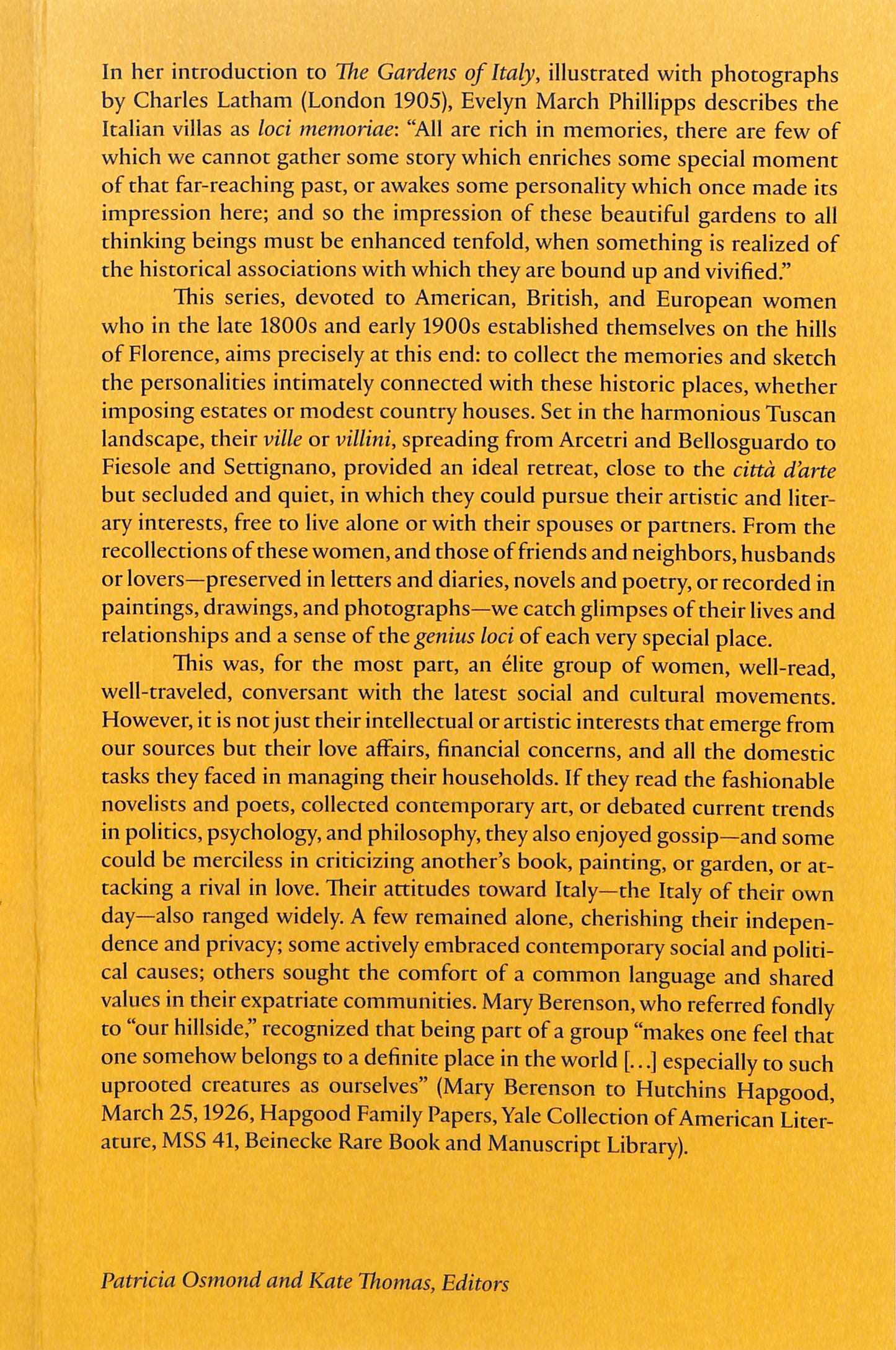TIFFANY L. JOHNSTON
TIFFANY L. JOHNSTON / Villa I Tatti: Mary Berenson's "Golden Urn" Arcadia
TIFFANY L. JOHNSTON / Villa I Tatti: Mary Berenson's "Golden Urn" Arcadia
Couldn't load pickup availability
Tiffany L. Johnston, Edited by Patricia Osmond and Kate Thomas
Villa I Tatti: Mary Berenson's "Golden Urn" Arcadia, 2024
Paperback with flaps, 32 pages
17.1 x 23.8 cm
Centro Di
Based on her voluminous manuscripts, the first book in the series reflects upon Mary Berenson's association with the hillsides below Fiesole and how, over a lifetime, she was instrumental in transforming the home she shared with her husband—art connoisseur, Bernard Berenson—from a rustic farmhouse into its current incarnation, The Harvard University Center for Italian Renaissance Studies. Providing glimpses of Mary's vibrant personality, the essay conveys a vision of the area as the Berensons once knew it and reveals interesting hillside connections both personal and historical. It further suggests that Mary's indomitable philosophy, what she called the "Golden Urn" principle, guided her vision for Villa I Tatti, a place whose unique atmosphere, as much as its inhabitants, drew artists, writers, and statesmen, as well as the affluent and fashionable from around the world.
On the hillsides of Fiesole and Settignano, overlooking the city of Florence, the beautiful villas and gardens evoke memories of their former owners and residents—many of them American, British, and European women expatriates who made their homes here in the late 1800s and early 1900s, attracted by Florence’s artistic treasures, the Renaissance ideal of villa life, and the quiet, harmonious landscape. This series Our Hillsides. Women Expatriates and Their Villas and Gardens on the Hills of Florence 1890-1950 aims to revive and enrich these memories by recounting the stories of a group of independent and talented women: Mary Berenson, Catherine Jeanne Ghyka, Florence Blood, Vernon Lee, and Nina Auzias Stein. Drawn chiefly from contemporary sources—letters and diaries, novels and poetry, drawings and photographs—preserved in library and archival collections across the continents, much of this material is published now for the first time.
Although there are notable exceptions, most of the women expats in our group belonged to a well-educated and well-traveled élite, intent on pursuing their interests in art, literature, philosophy, or music while enjoying the teas, dinners, and social connections offered by what Mary Berenson called "our hillside". But our sources also provide fresh insights into their personalities, friendships, romances, and rivalries, as well as the challenges of managing their households and designing and caring for their gardens. Moreover, in the years following World War I, we see the disruptive effects of national and international events on their hitherto relatively tranquil and secure lives, and during World War II, the severe hardships and life-threatening dangers endured by those who could not leave their hillside homes or who, despite all, chose stoically to remain.








